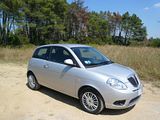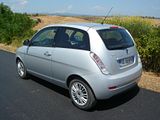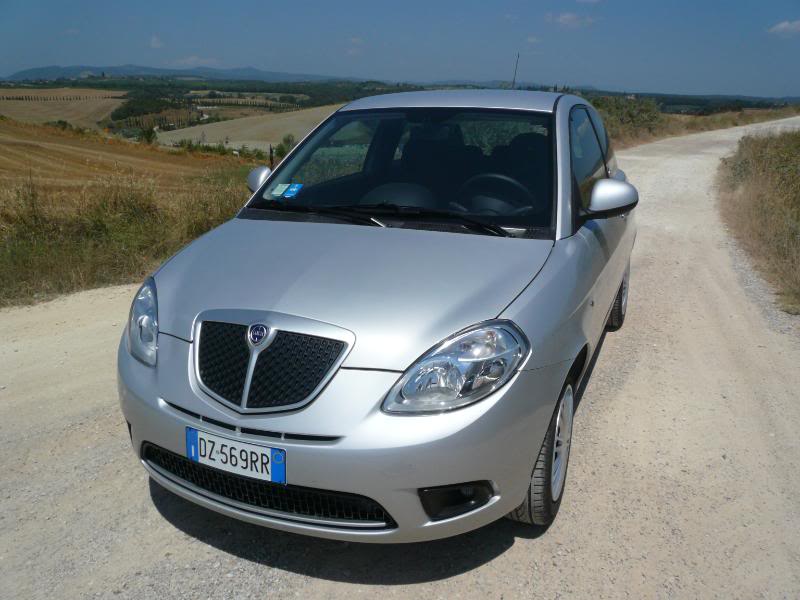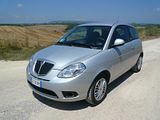 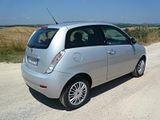  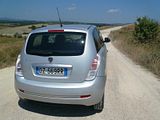   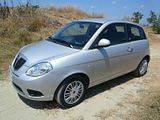 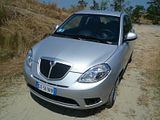 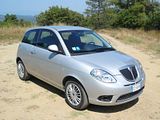 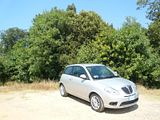 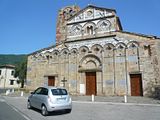  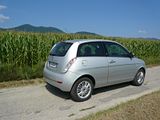 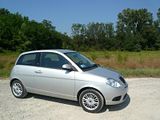   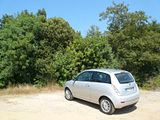 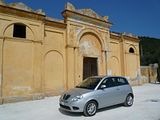 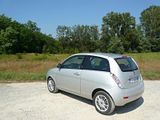 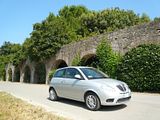 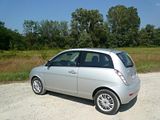  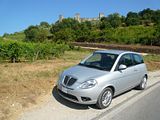 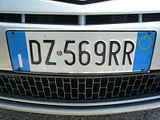 |
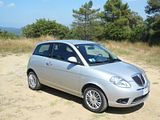 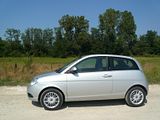
Much ink has been spilled over the plight of Alfa Romeo, with the doubters far from convinced that each and every latest model under review is a “real” Alfa or that it can truly save the marque. As is evidenced by this site and just about any other that you visit, the topic generates much emotion, and in my humble opinion, even ignoring my often stated affection for the marque, quite rightly so. However, there is another Italian car that has, in many ways, suffered even more over the past 40 years, and about which far less is written. Of course, I mean Lancia. With an equally distinguished past and a heritage more for quality of engineering than outright motorsport, unlike its Milanese rival, this is a marque that has been struggling on a life support system for many years. Think back to the creations of Vincenzo Lancia, a quite brilliant engineer who gave the world the advanced Lambda in 1922, and the Aprilia in the 1930s, or more recent gems like the Aurelia, the Flaminia, the Flavia and the Fulvia and it is hard not to be impressed by what this once proud marque used to represent. Even after acquisition by the Fiat Group in 1969, things looked rosy, with the Beta doing very well in the early 1970s.
 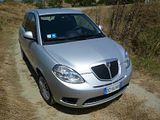 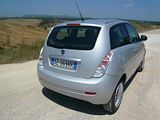 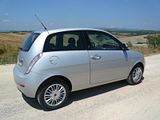
Hard to imagine now, but the thrusting young executive in the UK who could afford better than a Cortina Ghia did not aspire to a BMW, but a Lancia Beta, and if the Berlina was just too practical, he or she could always opt for the stylish coupe., the HPE or the Spider. Thousands did. In 1979, Lancia won the prestigious Car of the Year award with the Delta, beating off formidable competition from the first front wheel drive Astra/Kadett. Then in April 1980, it started to go wrong: a report on the consumer programme “That’s Life” that Lancia were buying back almost new rusty Betas and scrapping them proved to be an almost fatal blow to the credibility of the entire brand. Yes, it is true that there was a design problem, but plenty of other makes had similar issues at the time, and the manufacturers or importers were simply in denial. Only the tremendous success of the rallying Delta Integrale kept any momentum behind Lancia, and, almost starved of investment, new models became fewer and fewer, and less interesting. With sales dwindled to negligible, Lancia abandoned the UK market in 1994, and has yet to return. One car above all else has kept Lancia alive though, through these troubled times, and it is their smallest model. The little Yspilon, a smart three door hatchback constitutes a huge proportion of Lancia’s sales (in excess of 80% at one point), and is a regular top seller in its home market. Last time I came to Tuscany, my rental steed was the predecessor Y, which was a car that impressed me, so I was keen to see what the current model was like, and persuaded Hertz Italia to swap the 500 for the little Lancia for the last couple of days of my trip.
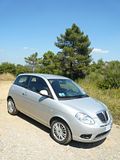 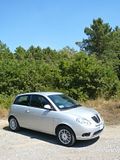   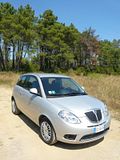  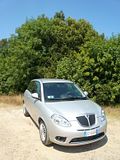 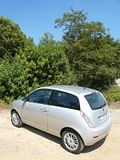 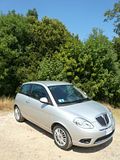
Although the styling of the Ypsilon is quite unlike any Fiat, it is heavily based on the parent company’s componentry, sitting on the second generation Punto platform. That means that you get a range of engines choices that are familiar from the Fiat catalogue. The test car came with the entry level 8 valve 1.2 petrol engine, and it develops 60 bhp. I was surprised when I did my research to find that this is the case, as this is slightly less power than in the 500 I had been driving, and yet had been I asked to guess, I would have concluded that the Lancia was the more powerful. Whereas the 500 had a lack of low end torque, the engine in this test car – which had done less miles than the Fiat – had no such issues, and the Ypsilon felt far livelier. Indeed for a car of this power, I would say that performance is good. The engine is eager, and smooth and very refined. It has does have a distinctive, though muted, note to it, which sounds not unlike the Alfa Twin Spark engines of yore, and certainly rather agreeable.
  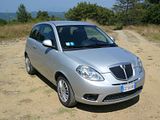 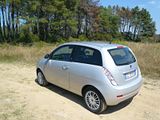
The car is helped by what would seem like an appropriate selection of gear ratios, and aided further by a gearchange that is really excellent. What might look like a rather long wand of a gear lever with a stylised knob on it is actually the means of sliding in a most slick manner from gear to gear. This bit of the car, Lancia have got absolutely spot on. When I first set off, I was alarmed at the steering, which felt so light as to concern me that I could not drive the car, but then I spotted that the “City” light was illuminated. Once that was turned off, and I got normal weighting, then all was well. Whilst not quite at Ford or Abarth levels, there are no issues here, either. The steering is well weighted and has good feel. There is quite a bit of roll on the corners, but the handling feels tidy and safe and I was able to tackle some of the twistier roads with both aplomb and confidence. No problems with the brakes, which were light in operation and slowed or stopped the car readily. There is a traditional pull up handbrake lever between the seats. Some of the Tuscan road surfaces are truly terrible, making it hard to judge the ride qualities, as there occasions when the Ypsilon was as bouncy as the 500, but looking at what I was driving over, i think any car would have struggled. On smoother surfaces, it was fine. Coupled with low noise levels, this was a more relaxed car to drive – at the prevailing speed limits thanks to a profusion of electronic speed cameras that now infest Italy – than the 500. It is also easier to see out of, as the side rear windows are larger. with less metalwork to constitute a blind spot over your shoulder when reversing. As this is a small car, manoeuvering it, and turning it round proved particularly easy. Pretty well top marks for the driving experience.
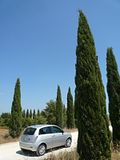 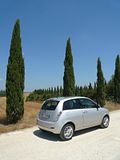 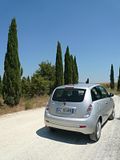 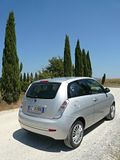 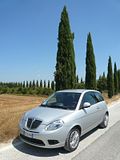  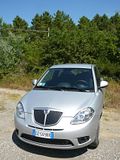 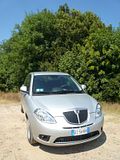 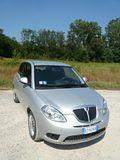
Open the door and look inside the Ypsilon, and this does not look like a Fiat at all. Alcantara trim, initially offered by Lancia and since copied by many others, is available in other models in the range, but did not feature in the test car. The seats are trimmed in a fabric called Techno and this a similar sort of fabric is also applied to much of the dash. There is a central pod of instruments – three of them – mounted in the middle of the dash, but angled slightly to the driver. To either side of this are lipped flat surfaces that you could use as oddments stowage, though I suspect anything you put there might reflect annoyingly in the windscreen. Although the dials are a long way away, they are clear and easy to read. They constitute a speedometer, rev counter and fuel gauge. Lower down the centre of the dash, you find the stereo system, a rather garish silver Blaupunkt unit, which looks old fashioned, and had quite small buttons making it fiddly to operate. There are no wheel mounted controls for it, and it did not appear to be wired through the ignition, so you had to turn the unit off when you parked up. Under that are the air conditioning controls, where the outer sleeve rotates to select the setting marked on the top half of the circumference and there is a rotary dial inside for the settings marked on the lower half. On its fourth speed, the fan is noisy, but was effective in blasting cold air into the car on what proved to be another couple of very hot days. Lower speed settings are much quieter. Column stalks do the rest of what you need. The overall effect is one of elegance, and unfussiness, which is probably a long-standing hallmark of the Lancia brand.
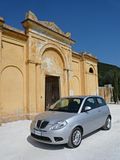 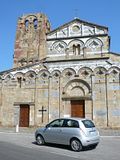 
The Ypsilon is a small car, but it does prove decently roomy. There are three seat belts in the back, with the mounting for the central one rather awkwardly attached to the roof, with a feed from the driver’s side of the car, which you can see in the rear view mirror. I am not sure that three people would want to travel far in the back, but two would be OK, with adequate head and leg room. The boot is small, probably no bigger than in the 500, but it can be extended by folding the rear seats down. Surprisingly, the rear seat back rest is not split, and when it drops down onto the seat cushion, there is quite an upward slope to the newly created loading area, and a notable step up from the original boot floor area. In the cabin, there are door pockets, a glove box, a moulding in front of the handbrake for coffee cups and the top surface of the dash for those odds and ends, along with a small area in front of the gearlever.  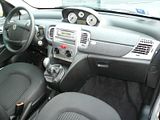 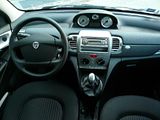  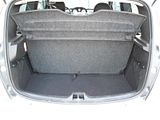 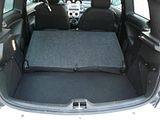 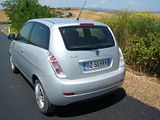 For me, the little Lancia was a Big Hit. I was unsure quite what to expect, but what I found was a stylish small car, with an engine that made the most of its 60 bhp and which was surprisingly good to drive. It was nicely finished and had no significant weak points. No wonder if sells well in Italy where the small car still dominates the market. What may surprise you is that I actually preferred this car to the 1.2 engined Fiat 500 with which I started the vacation. Of course the Fiat looks great, but the engine was its weak point, and in the Lancia there was no weak point. It surprised me, too, to reach this conclusion, but just goes to show that you really do need to test a car yourself to reach your own verdict. For me, the little Lancia was a Big Hit. I was unsure quite what to expect, but what I found was a stylish small car, with an engine that made the most of its 60 bhp and which was surprisingly good to drive. It was nicely finished and had no significant weak points. No wonder if sells well in Italy where the small car still dominates the market. What may surprise you is that I actually preferred this car to the 1.2 engined Fiat 500 with which I started the vacation. Of course the Fiat looks great, but the engine was its weak point, and in the Lancia there was no weak point. It surprised me, too, to reach this conclusion, but just goes to show that you really do need to test a car yourself to reach your own verdict.
 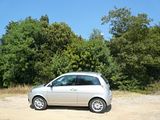 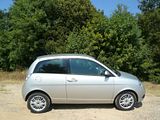 
|
